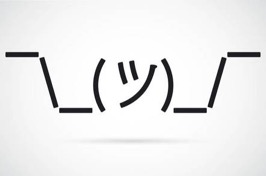Aren't

"The way things aren't might not matter much at all."
The Muse reports that she's been on a tear at work lately, fed up with what she sees as an unhealthy fixation upon the way things aren't. It's a common and powerful seduction, to parse the surrounding territory as what it most clearly isn't. Look out the window on a rainy morning and characterize the view as "not sunny." This perspective almost guarantees disappointment. More importantly, it separates the observer from the way it is. If all change rests upon the full , albeit temporary, acknowledgement of the way things are, this sort of perceiving seems to guarantee that nothing will change. How it should be, with the addition of bus fare, will get you a ride downtown. Absent that bus fare, you'll likely just get to watch the bus head downtown without you.
So much energy these days seems to be expended describing how things aren't. I know, it's a form of passionate protest, perhaps intended to reassure that one hasn't lost the ability to discern the difference between the way things are and the way things might be, or probably could be, or really should be, but these veiled complaints provide little leverage for doing anything. We must, it seems, acknowledge the way things are to find any leverage to make them any different. An enticing vision for future possibilities might be necessary, but more than a leavening tablespoon of vision seems to blow up the possibility of doing anything different in the here and now.
One can be altogether too well informed. Once I developed a more discerning palate, I quaked at the prospect of even entering a Waffle House, let alone ordering food there. Note, please, that I've never even been inside a Waffle House, but that lack of primary experience has not prevented me from working hard to avoid the place. This make for difficult times when I find myself where Waffle Houses comprise the totality of options for supper. I know too well why I shouldn't go in there, but not nearly well enough why I should.
In our Mastering Projects Workshop, we'd spend an hour early on the first morning listing all the difficulties people were facing with their project assignments. Unsurprisingly, nearly an identical list emerged every time. Most of the items listed were perceived as serious problems requiring some fixing, but we'd characterize them as evidence that they were assigned to a severely normal one. We had the advantage of having watched scores of individuals describe their problems and perhaps better appreciated that these were universal difficulties of organizational engagement, and not evidence of any necessary encumbrance to getting anything done. Clueless Decision Makers topped nearly every list, yet we'd never seen any project manager or participant successfully transform their clueless decision-makers into fully clued-in ones. "Who's managing your project while you're off failing to clue in your decision-makers?," we'd ask.
We were trying to help these people make a perhaps more useful distinction. These apparently defining problems might alternatively become background-coloring difficulties, surface imperfections that need not terribly encumber forward progress. If Apple could deliver high-impact products with clueless decision-makers intact, anyone might. The game might be played on a different level than Whack-A-Mole, leaving the obviously taunting moles to distract others while we set about our urgent and important work.
By far the most efficient way to resolve problems has always been to neutralize their influence. How thing aren't seems like a prescription for more deeply encumbering one in solving the all too obvious problems which probably don't have real solutions anyway. We might just keep our heads down and make progress in spite of the obvious fact that the wind's blowing in the opposite direction than our preferred course requires. We might tack there while the dissatisfied grumble and wait for more favorable winds. The way things aren't might not matter much at all.
©2018 by David A. Schmaltz - all rights reserved


